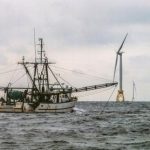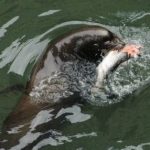Tag Archives: Alaska Pollock

‘A’ season pollock quota back on par after decrease last season
Bering Sea pollock fishermen have almost met their “A” season quota. Since the fishery opened in late January, nearly 100 vessels have caught about 1.2 billion pounds of Alaska pollock. That leaves about 43 million pounds still available to catch. “It’s definitely a lot of fish,” said Krista Milani, a fisheries resources management specialist with the National Oceanic and Atmospheric Administration in Unalaska. “Sometimes when you think about the amount of pollock that they’re able to sustain in the Bering Sea, it’s kind of mind-blowing how much pollock is actually there.” According to NOAA, fishery managers were dealing with data gaps stemming from the COVID-19 pandemic. A population survey also came back lower than expected. “A” season ends June 10 — the same day “B” season starts. >click to read< 11:04
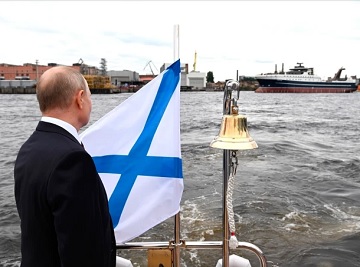
Despite war ban, Russian seafood could enter the US anyway
Fishing is big business in Russia, one closely linked to the Kremlin and President Vladimir Putin’s projection of power at sea. The country is one of the world’s top seafood producers and was the eighth-largest exporter to the United States last year, with more than $1.2bn worth of sales, the bulk of it king crab. But it is unknown exactly how much manages to land in the US by way of China, which sent another $1.7bn in fish to the US last year. Nor does the Biden administration’s ban require companies importing from China to find out. But the same species is also harvested in Russia in similar amounts, and once processed and imported from China, fills an important gap in the US market. In lieu of tracing the country of origin, US producers rely on the name recognition of Alaska pollock to signal where the fish was caught. >click to read< 17:31

Seafood industry seeks protection from Russian military exercises in U.S. waters
U.S. Coast Guard capability to safeguard national interests and promote economic security in the Arctic will be the subject of a congressional hearing on Dec. 8, one in which Alaska’s commercial fishing entities have a special concern. “From our vantage point, on the front lines of a changing Arctic, a robust U.S. military presence to protect U.S. interests in the region is simply non-negotiable,” said Stephanie Madsen, executive director of At-Sea Processors. The trade association, based in Seattle, represents six member companies who own and operate 15 U.S. flag catcher/processor vessels who harvest Alaska Pollock in the Bering Sea and Aleutian Islands and Pacific whiting in Pacific Northwest coastal waters. >click to read< 08:26

“Wind is the culprit,” – NOAA study shows wind influence in GOA Pollock abundance
As Bob Dylan famously said “you don’t need a weatherman to know which way the wind blows.” The study conclusively shows for the first time that year-to-year variation in the geographic distribution of juvenile Pollock in the Gulf is driven by wind direction, which may keep juvenile Pollock in favorable habitat, or push them into currents and on to less favorable conditions. “Wind is the culprit,” according to AFSC biologist Matt Wilson. “The consequence is that when a large proportion of the juvenile population is transported to the southwest many of those fish are likely lost from the Gulf of Alaska.” >click to read< 11:17
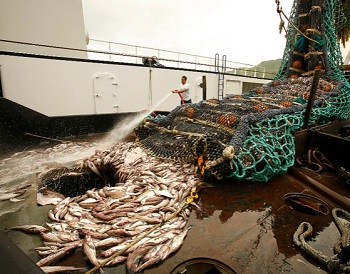
Alaskan Pollock Production Continues As Usual Despite The Coronavirus
“Basically, current demand for Wild Alaska Pollock is very strong and we are doing everything we can at the Association of Genuine Alaska Pollock Producers to support our members in meeting the demand,” said Morris. This is in stark contrast to the situations of fishermen targeting other species across the country, many of whom have seen significant losses. Another reason the Alaskan Pollock fishery is staying afloat has to do with the processing and shipping of the fish.,, All processing of Alaskan Pollock, however, occurs on the massive fishing vessels at sea or in facilities in Alaska, which gives Pollock fishermen an advantage over some other seafood producers. >click to read< 13:20

Tersan Shipyard has signed a new contract for a second freezer stern trawler
The new vessel will be among the world’s largest purpose-built factory trawlers and will trawl Alaska pollock in the Sea of Okhotsk, as well as herring, mackerel and pollock in the Pacific. The vessel is arranged for pelagic and semi-pelagic trawling, using two main trawl winches working in combination with ice trawl gallows and four large pelagic sweep line drums. The Skipsteknisk designed vessel will be 108 by 20 metres with accommodation for up to the 150 people on board,,, >click to read< 16:25
Alaska tops nation in total fishing volume for 20th year
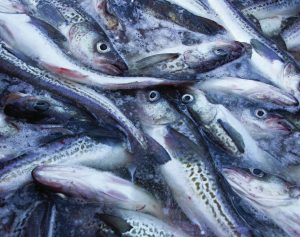 The annual report detailing national and regional economic impacts of U.S. fisheries totaled $9.6 billion in value in 2016 with Alaska as usual producing more than the rest of the nation combined. Alaska produced 58 percent of all landings and for the 20th straight year brought in the highest volume, according to the 2016 Fisheries of the United States report by the National Marine Fisheries Service. The top spot for all ports in the nation went to Dutch Harbor, which brought in 770 million pounds with Alaska pollock accounting for 89 percent of that volume. click here to read the story 16:43
The annual report detailing national and regional economic impacts of U.S. fisheries totaled $9.6 billion in value in 2016 with Alaska as usual producing more than the rest of the nation combined. Alaska produced 58 percent of all landings and for the 20th straight year brought in the highest volume, according to the 2016 Fisheries of the United States report by the National Marine Fisheries Service. The top spot for all ports in the nation went to Dutch Harbor, which brought in 770 million pounds with Alaska pollock accounting for 89 percent of that volume. click here to read the story 16:43
Bioengineers look to Alaska Pollock to help save lives
 When researchers at the University of Tsukuba in Japan were looking for biomaterials that could improve the performance of surgical sealants, they turned to a familiar cold-water fish: Alaska Pollock. The results of their tests on rodent and pig tissue were published in Colloids and Surfaces B: Biointerfaces, a peer-reviewed scientific journal that focuses on bioengineered materials, in October. Surgical sealants are mainly used to stop bleeding in wounds from surgical cuts during a procedure. The first sealants were invented in 1909, and made from human plasma and an enzyme derived from cattle. But according to a rehash of the technology’s history, (“Evolution of hemostatic agents in surgical practice,” Indian Journal of Urology, 2010), they came with steep drawbacks. Patients’ immune systems often reacted poorly to the material. And at the time, human plasma screening was inadequate to prevent transmission of blood-borne viruses to patients. This led to new viral infections. Read the story here 18:40
When researchers at the University of Tsukuba in Japan were looking for biomaterials that could improve the performance of surgical sealants, they turned to a familiar cold-water fish: Alaska Pollock. The results of their tests on rodent and pig tissue were published in Colloids and Surfaces B: Biointerfaces, a peer-reviewed scientific journal that focuses on bioengineered materials, in October. Surgical sealants are mainly used to stop bleeding in wounds from surgical cuts during a procedure. The first sealants were invented in 1909, and made from human plasma and an enzyme derived from cattle. But according to a rehash of the technology’s history, (“Evolution of hemostatic agents in surgical practice,” Indian Journal of Urology, 2010), they came with steep drawbacks. Patients’ immune systems often reacted poorly to the material. And at the time, human plasma screening was inadequate to prevent transmission of blood-borne viruses to patients. This led to new viral infections. Read the story here 18:40
American Marine Ingredients turns pollock research into supplement
 In a victory for scientists researching ways to use fish parts that don’t fit on a bun, a seafood company has begun sales of vitamins using oil extracted from the pollock livers. American Marine Ingredients is selling 54 Degrees North Omega-3 with Vitamin D3, using a distillation method researched by University of Alaska Fairbanks associate professor Alex Oliveira. Read more here 08:24
In a victory for scientists researching ways to use fish parts that don’t fit on a bun, a seafood company has begun sales of vitamins using oil extracted from the pollock livers. American Marine Ingredients is selling 54 Degrees North Omega-3 with Vitamin D3, using a distillation method researched by University of Alaska Fairbanks associate professor Alex Oliveira. Read more here 08:24
Fish fight: Western Alaska group objects to McDonald’s marketing
 McDonald’s announced this week that packaging on its Filet-O-Fish sandwiches and new fish nuggets, both made from pollock caught in the Bering Sea, will be stamped with a label that reads “Certified Sustainable Seafood.” What most customers won’t know is that Alaska pollock is a controversial fish among some village fishermen who blame the trawler fleet for wasting thousands of king salmon each year. Read more
McDonald’s announced this week that packaging on its Filet-O-Fish sandwiches and new fish nuggets, both made from pollock caught in the Bering Sea, will be stamped with a label that reads “Certified Sustainable Seafood.” What most customers won’t know is that Alaska pollock is a controversial fish among some village fishermen who blame the trawler fleet for wasting thousands of king salmon each year. Read more
National Fisheries Institute – Top Ten List, a Familiar School of Fish
10 Most Popular Make up More than 90% of the Fish Eaten
Washington, DC – September 24, 2012 – From Canned Tuna to Cod the top ten most consumed seafood items by Americans are a very familiar group that feeds a growing market.
The federal government recently reported that the overall seafood volume was 4,650,000,000 pounds. The data also showed American seafood companies exported a record 3.3 billion pounds valued at $5.4 billion.
http://www.aboutseafood.com/press/press-releases/nfi-top-ten-list-familiar-school-fish






































